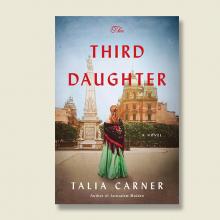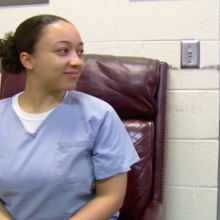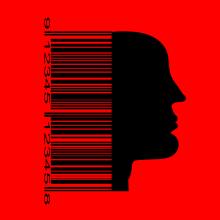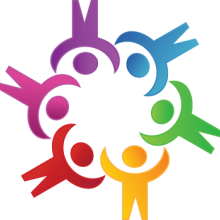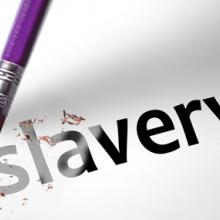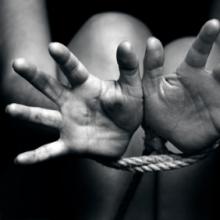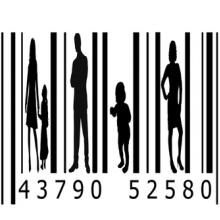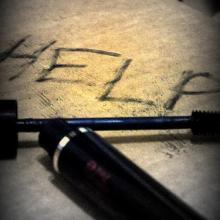Sex Trafficking
Why does QAnon resonate with these evangelicals? Part of the answer is their strong political alignment with the president, but it’s also true that evangelicals have long organized around the issue of human trafficking. And according to the major anti-human trafficking organizations in the U.S., that axis of devotion and suceptibility due to political alignment is creating a nightmare for their work.
Compassion. Curiosity. Courage. To author Talia Carner, a writer needs these three qualities to tell a good story — and they are on full display in Carner’s latest historical novel, The Third Daughter. Based on “The Man from Argentina,” and the tales of Tevye the Dairyman and his daughters by Yiddish writer Sholem Aleichem, the book tells the story of the hundreds of Jewish girls from Eastern Europe who were trafficked by the Jewish pimps union, Zwi Migdal, and brought to Argentina and Brazil in the late 19th and early 20th century.
Cyntoia Brown's murder conviction at 16 years of age galvanized A-list celebrities to campaign for criminal justice reform.
Americans are more aware of the $99 billion global sex trafficking industry than its existence in the U.S., potentially because many people — Christians included — have a dated understanding of what constitutes sex trafficking.
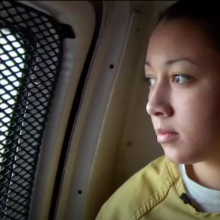
Image via PBS documentary Me Facing Life: Cyntoia's Story
It was this harsh sentence that did not take into account her age and circumstances at the time that sparked an outcry among activities and celebrities alike, calling for her release.
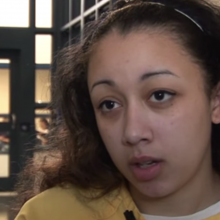
Image via PBS documentary, Me Facing Life: Cyntoia's Story
Tennessee Gov, Bill Haslam commuted the sentence of Cyntoia Brown Monday morning, the Tennesean reports. Haslam has ordered Brown’s early release set for Aug. 7, after 15 years in prison. Brown is an alleged sex trafficking victim who, at age 16, killed a 43-year-old man who had picked her up and taken her to his home.
Some of my friends have been talking about giving up the “evangelical” label, because of what it has come to be associated with, in this year’s political campaign. I’m not ready to make that move. I spent a good part of the 1960s trying hard not to be an evangelical, but without success.
When I marched for civil rights during my graduate school years, I helped to organize “ban the bomb” marches and protested the Vietnam War. I was clearly out of step with much of the evangelicalism of the day.

Image via LoloStock/Shutterstock.com
To leave the trafficked sex industry is to encounter many barriers. Among those is the need for employment opportunities and the opportunity to learn a trade while gaining skills to earn an independent income.
Consider this: A woman leaves a trafficker, through his arrest or her own personal escape. This trafficker created total dependence — someone who, amidst abuse and exploitation, provided for her. She usually had no control of this money, and gave over anything she made for his earnings. Her needs are met — but she is completely dependent on him for survival.
Then she is separated from her trafficker, and she has nothing: No income, usually a limited education, and at times minimal job skills to report on a resume. Her survival reflects her strengths and resources — but how does she capture resilience for prospective employers? What does she do when she carries a criminal record history?
One survivor described this experience to me, saying, “I look horrible on paper.”
My difference catches me off-guard. Entering into new situations, I’m just being myself — not suspecting anything, doing the things that I do — when an odd, slightly off comment, a stray remark makes me realize that the person across from me is not interacting with me. Instead, they are interacting with a perception of who they think people like me are: Asian, woman.
And usually that perception does not include “leader.”
I’m different sounding. I’m different looking. I’m different leading.
As a leader, one question has helped me try to stay in my sweet spot and stick to my true voice, even when it’s different from those around me. What is the unique joy that I bring to God’s heart? When I feel the blister forming from too many frictional interactions, it’s this question that takes me back to my center.
Embracing the differences God gave me to steward, to shelter in my body, I continue on, knowing that perhaps for someone, somewhere, this will be a good fit.
Human slavery has been in existence for thousands of years and unfortunately still flourishes today. An estimated 36 million slaves exist — perhaps more than any time in history —in countries around the world, even the U.S.
“You shall not pervert the justice due to the sojourner or to the fatherless, or take a widow’s garment in pledge.” —Deuteronomy 24:17
This verse names the three populations most vulnerable to exploitation: those living in a foreign country, children without parents, and women without protection. These populations have always been the most vulnerable to human trafficking, and they remain so today.
Hope for Justice aims to end human trafficking in our lifetime. And one priority to achieve that in the U.S. is training healthcare professionals to recognize victims of human trafficking. Almost 88 percent of victims of domestic sex trafficking encounter healthcare professionals while they are being trafficked.
January is National Human Trafficking Awareness Month, but my wish is that we all work to make a real difference every month and every day of the year. I am a survivor of child sex trafficking. But there are other forms of modern-day slavery, like labor trafficking, that are just as evil. Human trafficking affects vulnerable women, men, children, and adults in both developed and emerging countries. Whether it is a 12-year-old runaway — like I was — or a 35-year-old man looking for a better job, vulnerable people are exploited and coerced every day.
Children who have been trafficked — as I was — often do not recognize themselves as victims. It took me decades to begin to see myself as a victim. The manipulation, exploitation, and fear put in place by my trafficker set about normalizing my trauma and also convinced me that it was all my fault.
My greatest hope and purpose in life today is to reach others in as many ways as I can so that they may never have to experience what I did for so long. We must ask important questions in order to really begin to make a difference. Here are a few of the most important questions to be asking.
The 2009 movie Taken throws its audience into the world of human trafficking. An American teen girl and her friend are taken while on a European vacation and sold into the sex trade through a multinational mob-ran human trafficking ring. The girl is ultimately rescued by her secret agent father played by Liam Neeson. With an estimated gross profit of $145,000,000, it is clear that audiences liked this action-packed thriller. While entertaining, unfortunately, Taken dramatizes and stereotypes traffickers. Contrary to what's portrayed in popular movies, there are many types of traffickers beyond the stereotypical pop-culture swarthy, heavily accented, and foreign organized crime ring.
First, many corporations participate in human trafficking by turning a blind eye to the working conditions of either their workers or the workers of their suppliers, vendors, contractors, and subcontractors. For example, the chocolate and fine jewelry industries are notorious for using slave labor. Beyond these well-known industries, exploitation occurs in the garment making trade, unscrupulous adoption agencies, and agriculture.
Diedrich Boenhoeffer wrote about it. Pastors preach about it. Churches strive for it.
Community.
It is a concept that has had a long history in the American church. It can come in many forms. Bringing a meal to a stressed out new mother. A church ice cream social. Youth group. Singles ministry.
But what does community look like when working on a social issue?
For human trafficking, that community comes in the form of partnerships. The 2000 federal Trafficking Victims Protection Act (TVPA) originally addressed human trafficking by creating the three 'Ps': prevention, protection, and prosecution. But after implementation occurred, the anti-trafficking community realized there was something missing. Thus, in 2008, the fourth 'P' —partnership — was added.
James' assertation that "Religion that God our Father accepts as pure and faultless is this: to look after orphans and widows in their distress"(1:27) is nothing new in the church. This verse gets pulled out on service days and when seeking funds for short-term mission trips. Its widespread usage makes it easy for us to see the orphan and widow as abstract conceptions. At best they are just another good we should do and at worst, we see them as an outdated notion that does not really apply to the modern American church.
However, the plight of these two underrepresented and often ignored groups — women and children — has modern impacts. These two tell the tale of human trafficking today. Human trafficking is an emerging human rights issue both globally and in the United States. With an estimated 14,500 - 17,500 trafficked through the U.S. each year, it is essential for the church to take notice. The orphan and widow make up the majority of human trafficking survivors.
Currently there are more people in slavery than any other time in history. In response to this, there are hundreds of anti-human trafficking organizations throughout the world. People are working tirelessly for justice and restoration for the victims.
There are the men and women who are rescued, some are just children. There are also the rescuers, the judges and lawyers who bring justice, and the psychologists who help to rebuild wholeness. Countless numbers of people support the end and rescue of those enslaved by trafficking – especially sex trafficking. But where are the “Johns” - the men[1] who play the role of Demanders in the Supply and Demand economics of this billion dollar international industry? I’d like to put some money toward restoring them.
Aren’t they an important aspect to this equation? Women and girls would not be victimized sometimes 40 times a day without those who pay for it. The captors would move on to more lucrative business ventures if there weren’t men willing to fork over money again and again for something that the world has decried as both illegal and immoral.
I’m surprised that this plays little to no role in our larger conversations about being serious in ending the sex slave trade. What is it that these men are seeking? Why are they paying for sex? Why are they choosing to have sex with someone who is clearly not there willfully? How much is power at play in this situation? What about the men’s ability to be in stable relationships? Why is there still a demand for enslaved persons?
Buying sex from enslaved people does not happen in a vacuum. There is a progression that includes various aspects. If we are serious about ending the sex slave trade we will need to address some serious issues within every nation in the world, particularly those with male-dominated societies that promote male aggression, provide women with limited or no educational and economic opportunities, and deprive men of solid and symbiotic relationships where they can find genuine intimacy and self-expression for their feelings.
Might I suggest 10 ways we can fight sex-trafficking:
At the beginning of the 21st century, Americans are used to thinking of slavery as a horror, yes, but one that was banished from these shores nearly 150 years ago. If only that were so.
The trafficking of men, women, and children for labor or sexual exploitation — or both — fuels an underground economy of misery in our midst in many major metropolitan areas and even in rural America. Immigrants without legal status, children in foster care — all those with tenuous community roots — are particularly vulnerable to exploitation.
The U.S. Department of Justice estimates that more than 300,000 children are at risk of being prostituted in the U.S. and that the average age of entry into prostitution for a child victim here is 13 to 14 years old. According to the DOJ, a pimp can make $150,000 to $200,000 per child each year, and the average pimp controls four to six girls. The United Nations estimates that traffickers generate more than $9 billion within the U.S. for both labor and sex trafficking.
Twelve year old Kathy* became caught up in a web of violence and forced participation in the commercial sex industry. She was taken from city to city and serviced many, doing what they wanted. Pregnant with her son, she found a way out or as she says, “God reached in and pulled me out of hell.” Now, many years later, she gives testimony to her story and strives to help other women “out of the business.”
My experience is with women like Kathy. By federal law, any minor exploited by prostitution or pornography is considered trafficked, and I am amazed at the courage of these survivors.
January is the National Human Trafficking Awareness Month. Have you been made more aware or knowledgeable? Do you know that human trafficking is defined as “modern day slavery” because it controls a person through force, fraud or coercion — physical or psychological — to exploit the person for forced labor, sexual exploitation, or both? Women, children, and men are all affected by this crime.
A small delicate silver cross hangs around Mint’s neck, a charm she reaches for nervously from time to time as she speaks.
Mint is her nickname, an Anglicized version of the long Thai name she was given and would rather not make public. As a former prostitute, the 24-year-old is concerned about bringing shame to her family, though she says everyone in her village in the northeastern province of Issan — a poor agricultural region along the border with Cambodia and Laos — would assume, or simply know, she had to be doing sex work to send money back home.
Everyone in Bangkok knows how it works. Many of the countless massage parlors, go-go bars, and karaoke joints peppered throughout the city are frequently thinly veiled fronts for prostitution. Heavily made-up girls hang around in the periphery of joints catering to Western tourists.
The rhythm of the skies and seasons — the rhythm of the church year — both are ancient interlocking symphonies of light that call us to watchfulness and mindfulness. A small light can illumine vast spaces and dark corners of our selves. A light can reveal new aspects to things we thought we knew about our world. And, the light of knowledge can change perceptions about things we thought we understood.
As you read these words, there are tens of thousands of homeless children (perhaps more) on the streets in the United States. Reliable numbers are hard to find, because these children for the most part are invisible. You would probably not notice them if you saw them. Nevertheless, from law enforcement and other government reports, hotline statistics, and the experience of agencies such as youth outreach ministries, we know that homeless, runaway (or “thrown away”) children are part of our communities — eating at McDonald’s, riding the subways and buses, hanging out at the mall, talking on cellphones, and sitting in the park. What we don’t often see about their lives is that, as homeless youth, they are always vulnerable to the worst kinds of danger — from inadequate shelter, to sickness, to malnutrition, to physical violence, to terrible sexual exploitation.

